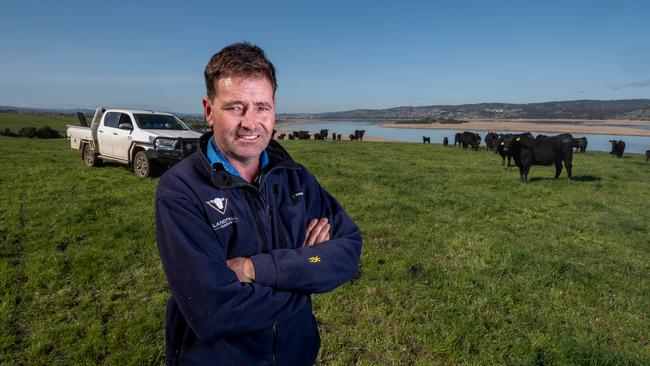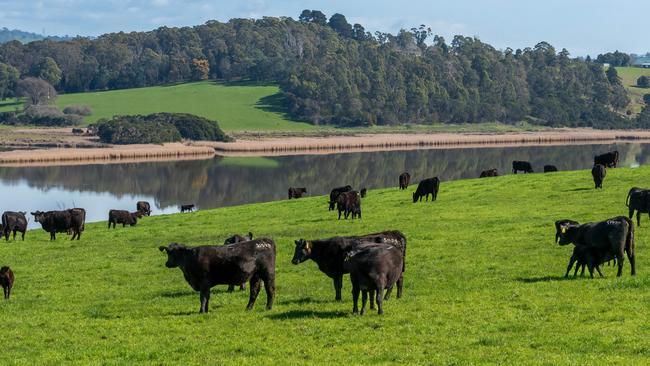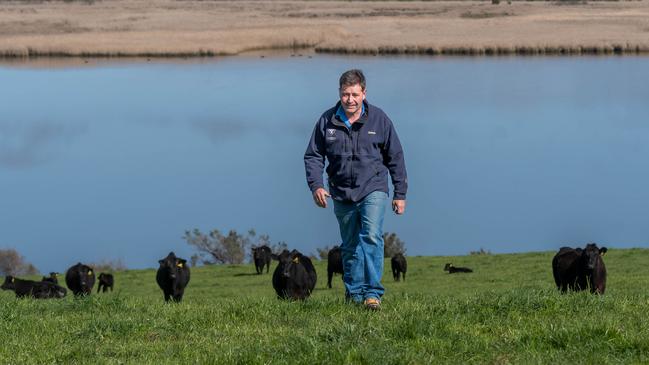Landfall Angus: How one of the nation’s biggest bull breeders reads the market
Days of heady beef prices might be over, but there are things that can be done to keep an operation profitable according to one major breeder.
A major Angus bull breeder has encouraged producers to focus on costs of production in the wake of the fall in commercial cattle prices.
Landfall Angus at Dilston in Tasmania sells hundreds of Angus bulls a year and principal Frank Archer says it is important to formulate a plan to ride out the challenges, including the price dip and tightening seasonal conditions in some areas.

He’s no pessimist and while reluctant to make any projections, believes the future for the Australian beef industry is strong.
“You have to have a positive outlook; in agriculture we face a lot of variables that are out of our control so remaining positive is sometimes what gets us through,” Mr Archer said.
Yet he is also a realist, and said there were ways to continue to remain viable in the current price crunch.
“Our business looks to provide the best value it can for its clients, and for commercial beef operations, you need to look at and maintain a low cost of production,” Mr Archer said.
That doesn’t and shouldn’t mean skimping on genetics, more that the correct genetics are paired with sound management to produce the biggest volume of high quality beef.
Mr Archer said it was vital to establish a productive and profitable production system, which maximised the use of pastures in a grazing situation.

Once that was in hand, choosing the right genetics followed, with the ranking of fertility, then growth then carcass merit in that order.
While the price differentiation for high carcass merit (payments for things such as intramuscular fat) was somewhat minimal, Mr Archer said producers did benefit from selecting for such traits.
“Beef is a relatively high-cost protein and so must meet or exceed consumer expectations or they will chose something else,” he said.
“By considering eating quality when selecting genetics, producers will be rewarded indirectly as consumers have a good eating experience and will continue to buy beef.”
The big trend Mr Archer sees on the horizon is the sustainability of beef. He said it was an asset for Angus breeders that their society had embarked on estimated breeding values for emissions from beef cattle.
“We have been involved with this and are following the outcomes closely,” he said.
“Sustainability is clearly about the environment and has social aspects but it must also have economics in the equation.
“As a business, profitability is a big part of sustainability and like all things, it must be a balance.”

As producers face a turnaround in fortunes, Mr Archer said they should consider two things.
If they are breeders, the core females are the most important and producers should be careful not to compromise feed resources in the hope that prices may improve for sale stock like steers. Sometimes, Mr Archer said, it was better to accept the ruling price and move on rather than hold and hope for a price increase and deplete feed reserves for breeders.
The second was to gain a solid understanding of the production system and the triggers of when to buy or sell.
“I was given a piece of advice once to be proactive with decision making,” Mr Archer said.
“Not every decision you make is 100 per cent right, but if you are having a crisis meeting, then a number of our options are no longer available to us.”




